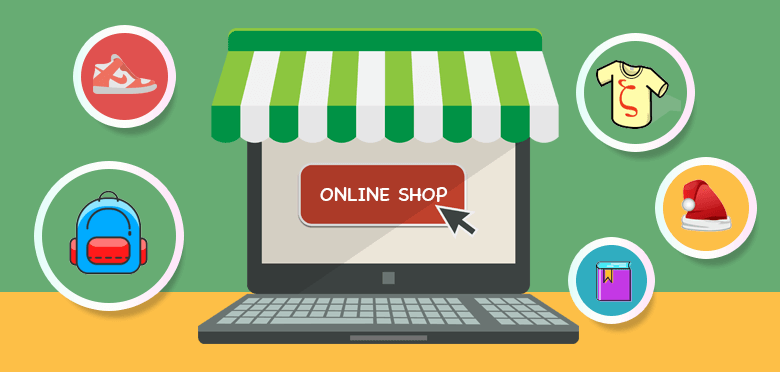How to Create a Professional Website for Product Selling: A Step-by-Step Guide.
How to Create a Professional Website for Product Selling: A Step-by-Step Guide
In today’s digital age, having a professional website is essential for businesses looking to sell products online. A well-designed, user-friendly website not only builds trust with potential customers but also makes it easy to showcase and sell your products. Whether you’re launching an e-commerce store or expanding your brick-and-mortar business online, this guide will walk you through creating a professional website for product selling.
Why You Need a Professional Website for Selling Products
Before diving into the technical aspects of creating a website, it’s important to understand why having a professional online presence is crucial for your success:
Increases Credibility: A sleek and well-organized website builds trust with potential customers, making them more likely to purchase from you.
Expands Your Reach: Unlike physical stores, a website is accessible to customers around the world 24/7.
Provides a Direct Sales Channel: You can sell directly to your customers without relying on third-party platforms, reducing fees and improving margins.
Now, let’s explore how to create a professional website for product selling, step by step.
1. Choose the Right Website Platform
To get started, you’ll need to choose a platform that makes it easy to build and manage your online store. The most popular platforms for e-commerce include:
Shopify: Ideal for beginners, Shopify is user-friendly and offers many templates designed for online stores. It handles everything from payment gateways to shipping integrations.
Woo Commerce: If you prefer to build on WordPress, Woo Commerce is a powerful e-commerce plugin that provides full control over your store’s functionality.
Big Commerce: Another excellent all-in-one platform for e-commerce, offering robust features for businesses of all sizes.
Wax eCommerce: Suitable for those who want more design freedom, Wax offers drag-and-drop website-building capabilities combined with e-commerce functionality.
Choosing the right platform depends on your technical skills, budget, and the scale of your business. If you’re a beginner with no coding experience, Shopify and Wax are great choices. For more customization, Woo Commerce or Big Commerce might be a better fit.
2. Pick a Domain Name and Hosting

A domain name is your website’s address on the internet (e.g., www.yourstore.com). It’s important to choose a domain name that is:
Short and Memorable: Keep it simple and easy to remember.
Brand-Specific: Your domain name should reflect your business or product name.
SEO-Friendly: If possible, include a keyword related to your niche in your domain name to help with search engine optimization (SEO).
Once you have a domain, you’ll need reliable web hosting to keep your site live. Many e-commerce platforms, like Shopify, offer hosting as part of their service. If you’re using Woo Commerce on WordPress, you’ll need to choose a hosting provider (e.g., Bluehost, Site round) that supports e-commerce features.
3. Design Your Website with the User in Mind
The design of your website can make or break your online store’s success. A professional, visually appealing site will encourage users to stay longer and browse through your products. Here’s how to design a professional website:
a. Choose a Professional Template
Most website platforms offer pre-designed templates or themes specifically built for online stores. Select a clean, modern, and mobile-responsive template. Your website should look great on all devices, as mobile shopping continues to grow.
b. Use High-Quality Images
Your product images are one of the most important elements of your website. Invest in high-quality photography to showcase your products from different angles. Clear, sharp images with zoom options give customers confidence in what they’re buying.
c. Focus on Simple Navigation
Keep your navigation menus intuitive. A well-organized menu ensures users can easily find what they are looking for. Use simple categories like Home, Shop, About Us, and Contact to make the shopping experience as seamless as possible.
d. Highlight Key Information
Ensure that important information such as shipping details, return policies, and customer support is easy to find. Consider placing these in the footer or a dedicated FAQ page.
4. Set Up Product Pages

Your product pages are where potential customers make their purchasing decisions, so they need to be flawless. Each product should have its own page with the following key elements:
Product Title: Clear and descriptive.
Detailed Descriptions: Provide enough information about the product’s features, dimensions, materials, and any other relevant details.
High-Resolution Photos: Showcase multiple angles and close-up shots to provide a complete view.
Pricing: Display your price clearly, and if there are discounts, make them stand out.
Call-to-Action (CTA): Use buttons like “Add to Cart” or “Buy Now” to create urgency and guide users through the buying process.
5. Implement Secure Payment Methods
To sell products on your website, you’ll need to integrate secure payment gateways. This ensures that customers can pay safely and efficiently. Popular payment gateway options include:
PayPal
Stripe
Square
Most e-commerce platforms come with built-in integrations for these gateways. Additionally, SSL certificates are necessary to encrypt payment data and ensure a secure shopping experience. Having an SSL certificate not only builds trust but also helps with SEO.
6. Optimize for SEO
To drive traffic to your website, SEO is crucial. By optimizing your site for search engines, you increase your chances of appearing in search results when people look for products like yours. Here are some SEO tips for your e-commerce website:
Keyword Research: Identify the search terms potential customers use to find products like yours and incorporate them into product titles, descriptions, and meta tags.
Optimize Meta Titles and Descriptions: Use concise and descriptive meta tags for every page on your site to improve search engine visibility.
Create Valuable Content: Add a blog to your website where you can post helpful articles, product guides, or reviews. This not only boosts SEO but also adds value to your visitors.
Mobile Optimization: Google prioritizes mobile-friendly websites, so ensure your site performs well on mobile devices.

7. Set Up Shipping and Taxes
Before launching your store, configure your shipping options and tax settings. Most platforms will help you automate these processes, but it’s important to define:
Shipping Rates: Offer a range of options, such as free shipping, flat rate, or calculated rates based on location.
Shipping Zones: Set up different rates for different regions if necessary.
Tax Rates: Ensure you comply with local tax regulations by setting up automatic tax calculations for your products.
8. Test Your Website Before Launching
Before launching, thoroughly test every aspect of your website. Here’s a checklist:
Check all links and buttons: Ensure everything works properly.
Test the checkout process: Make sure payments go through smoothly.
Review your product pages: Double-check descriptions, prices, and images.
Optimize for mobile: Make sure your website is fully responsive on mobile devices.





Советы по выбору тестов для бетона, которые помогут сэкономить время и деньги.
Испытание образцов бетона https://betontestlab.ru/ .